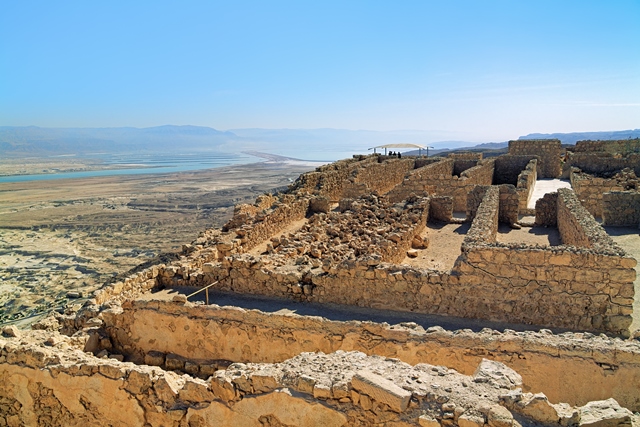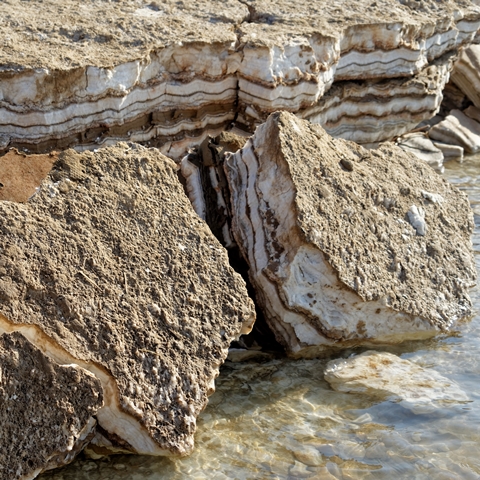Masada – What is the story of Masada?
Masada is one of the most prominent historical sites in Israel.
Masada is mainly recognized as a symbol of Jewish spirit and heroism.
At the time of the conquest of Jerusalem by the Roman army, a group of Jewish rebels joined forces and escaped from Jerusalem, and then took control of Masada. At that time, due to Masada’s strategic location, it was manned by a Roman garrison.
First buildings at the site were erected on the top of a secluded mountain in the Judean Desert by King Herod, who fled from Matityahu the Hasmonean many years before the conquest. He built a citadel at the top of the mountain to protect himself and his family, along with his loyal followers.
The compound included splendid palaces, baths and primarily walls and watchtowers.
If you want to see pictures of the site, go to the following link: Pictures of Masada
Jewish rebels who came to Masada, took control of it and moved into the palace rooms that were still more or less habitable.
The rebels enjoyed full Jewish community life there, establishing study and prayer rooms, and even constructing ritual baths.
It is important to note that not all the inhabitants of the Jewish fortress at that time were strictly observant. Some – according to the prevailing opinion – were very nationalistic and devoted to the ethos of Jewish independence, but did not fully adhere to halachic law.
The routine of daily life inside the walls was common to a routine followed during war times. The elderly, and the women and children were busy with daily household tasks such as laundry and cleaning. The men, on the other hand, trained to engage in combat and defend themselves against the Roman superpower.
It is important to understand that when talking about the adults who trained and prepared themselves for war, young teenagers were also among them.
At nightfall, led by their commander Elazar Ben Yair, the rebels would sneak out and make their way along paths only they knew how to navigate. They would cross the Judean Desert and raid local settlements in the area.
These raids were mainly revenge missions aimed at the Roman army, but were also well utilized for gathering food and provisions for the inhabitants of the Masada mountain stronghold.
Then the dreadful day arrived, when the Roman army completed its conquest of Jerusalem and demolished the Temple, and turned its focus towards dealing with the rebels occupying Masada.
The Roman army reached the base of Masada, and spent many months establishing camps arround the mountain. The Romans slowly closed in on Masada, and implemented a common war tactic of that time – they managed to besiege Masada from all directions.
Masada – The End
Jewish Masada defenders fought with every ounce of determination and strength they possessed, but when they realized they had nowhere to escape and that they were about to fall into the hands of the Romans, they chose death over slavery and committed mass suicide.
The attitude towards this historic suicide is still very controversial in many circles. In Jewish tradition, this suicide is particularly controversial due the question of whether suicide was even permitted in that situation.
When the Zionist movement came into being, it chose to embrace this story as an ethos of Jewish heroism in a struggle for independence. The ethos of fighting back, of willingly going into combat, even at the cost of death.
For years, youth movements in Israel have been coming to Masada to draw inspiration from the ‘heroic’ act of those who killed themselves.
Over the years, the allegedly sacred status of the suicide victims from Masada began to erode, and the extreme message of their choice to commit suicide has lost some of its brilliance. Today Masada is classified as a World Heritage Site and is a rare piece of history worth visiting.
It should be noted that the only written source depicting the story of Masada is in the Book of Josephus, where the story is recounted in great detail. However, there is no reference to this story in any other written record, nor has any written record been discovered in archaeology digs at the site.
Visitors to Masada can walk to the summit on foot, up a very long staircase built on the mountain. Alternatively, visitors can reach the top via a large cable car built there.
To plan a trip on the site, go to the following link to learn what the different options are: A Trip to Masada.
Read more about the Dead Sea. follow next link: dead sea blog







